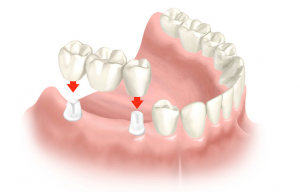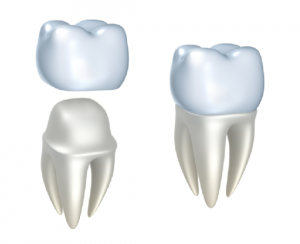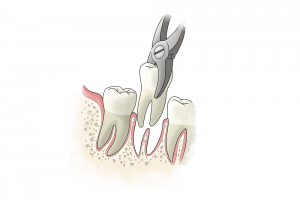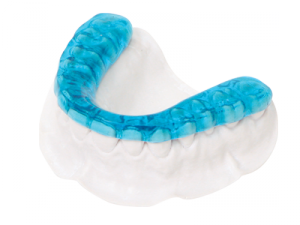Bridges
 Missing teeth can cause a number of serious problems such as the shifting of remaining teeth, or additional tooth loss. We can provide dental bridges at our office to restore the structure and function of your smile, and to renew your self-confidence. If you are interested in dental bridges or another of our restorative dentistry services, contact our office today.
Missing teeth can cause a number of serious problems such as the shifting of remaining teeth, or additional tooth loss. We can provide dental bridges at our office to restore the structure and function of your smile, and to renew your self-confidence. If you are interested in dental bridges or another of our restorative dentistry services, contact our office today.
Understanding the Procedure
Dental bridges are natural-looking porcelain restorations that are anchored either by a dental implant, or by the two adjacent teeth. Having dental bridges placed usually requires two office visits. During your first visit, the two anchor teeth will be gently filed down to make room for dental crowns. We will create a mold of those teeth as well as the gap, which will be used to create your permanent restorations. While we wait for your bridge and crowns to return from the laboratory, we will fit you with a temporary restoration to maintain the aesthetics of your smile.
We will invite you back to our office when your dental bridge is ready to be tried in. Your second appointment will involve a thorough check of the fit of the bridge to ensure a successful result. After a few weeks, we will schedule a follow-up appointment during which we will assess your gums and teeth and their adaptation to your new restoration.
Aesthetic Benefits
One of the greatest aesthetic benefits of dental bridges is the ability to improve the appearance of your entire smile with a single appliance. Missing teeth can make it difficult to laugh and smile with confidence, but dental bridges can give you the beautiful, complete smile you deserve.
Oral Health Benefits
Dental bridges can prevent your existing teeth from shifting out of place, as well as providing important balance and function in your smile. If you have a more involved medical history, dental bridges can be a great option as they do not usually require implantation surgery or extensive downtime.
Candidacy
Dental bridges may be right for you if you need to:
- Close the gaps left by missing teeth
- Prevent your teeth from drifting
- Restore the appearance of your smile
- Restore your ability to chew and speak normally
- Replace a partial denture with a more permanent solution
There are many different types of dental bridges, all of which will be discussed in detail during your consultation. We are dedicated to finding the most relevant treatment for your individual needs and will go to great lengths to educate you about your dental condition and treatment options.
Learn More about Dental Bridges
If you have decaying, damaged, or missing teeth that you want to replace with brand-new, white teeth, we have the solution for you. To schedule a consultation for dental bridges, contact our office.






